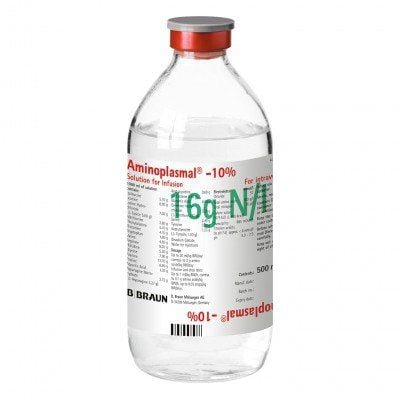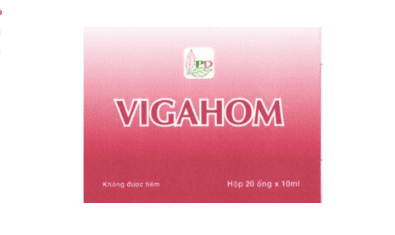This is an automatically translated article.
Caffeine citrate is known to be a psychostimulant. This active ingredient is in Ben Venue Laboratories' Cafcit (USA). So what is Cafcit and what does Cafcit do?
1. What is caffeine?
What is caffeine? Cafcit is a product of Ben Venue Laboratories (USA), the main ingredient is Caffeine Citrate, belonging to the methylxanthine group with stimulant effects on the central nervous system. Cafcit is prepared as a solution for injection in a 3ml vial, each ml contains 20mg of Caffeine Citrate (equivalent to 10mg of caffeine base).
2. What are the effects of Cafcit?
What are the effects of Cafcit? Structure of Caffeine relative to Methylxanthines theophylline and Theobromine. Most of the effects of caffeine are due to antagonism of adenosine receptors, including the A1 and A2A subtypes.
Caffeine's main effect is CNS stimulant, used to treat apnea of prematurity with some effects as follows:
Stimulation of the respiratory center; Increase minute ventilation; Reducing the threshold for CO2 rise; Increased response to increased CO2; Increased skeletal muscle tone; Reduce diaphragmatic fatigue; Increase metabolic rate; Increase oxygen consumption.
3. Indications and contraindications of Cafcit
Cafcit is indicated primarily for the short-term treatment of apnea of prematurity. However, do not use Cafcit if your child is allergic to Caffeine citrate or any of the other ingredients in the formula.
4. Dosage of Cafcit
Dosage of Cafcit is as follows:
Loading dose: Caffeine citrate 20mg/kg (equivalent to Caffeine base 10mg/kg) intravenously over 30 minutes. Maintenance dose: Caffeine citrate 5mg/kg (equivalent to Caffeine base 2.5mg/kg) intravenously over 10 minutes, every 24 hours and starting 24 hours after the first dose. Cafcit overdose and treatment:
Signs of Cafcit overdose include: restlessness, tachycardia, tachypnea, arching (opisthotonos), rigidity and tonic-clonic seizures, hypokalemia, mild tremor of extremities, gastrointestinal irritation or bleeding, leukocytosis, involuntary jaw and lip movements; Some other manifestations of Cafcit overdose include fever, agitation, excitability, increased muscle tone, gastric residue, abdominal distention, metabolic acidosis, hyperglycemia, and increased urea concentration. blood; No deaths related to Cafcit overdose have been reported in premature infants; How to handle overdose: Monitor caffeine levels in the blood and take appropriate supportive measures. Besides, monitoring potassium and blood glucose levels to adjust when necessary. In the event of a severe overdose of Cafcit, blood transfusion may be considered, and if convulsions are present, intravenous anticonvulsants (such as diazepam or a barbiturate such as Pentobarbital sodium or Phenobarbital).
5. Side effects of the drug Cafcit
In the process of using Cafcit, patients may experience some of the following side effects:
Increased blood sugar; Tachycardia or arrhythmia; Epilepsy ; Manifestations of hypersensitivity reactions; Sepsis ; Hypoglycemia; Vomiting, Necrotizing enterocolitis; Increased urine output, increased urinary sodium and calcium levels; Decrease in blood hemoglobin levels.
6. Interactions of drugs Cafcit
Possible drug interactions of Cafcit during use are as follows:
Caffeine has the potential to interact with CYP1A2 substrates (including inhibition or induction). However, the metabolism of caffeine in premature infants is limited due to the immature liver enzyme system. Other xanthine such as theophylline: Concomitant use with Cafcit should be avoided. Cimetidine and Ketoconazole: The dose of Cafcit should be reduced when co-administered, as these drugs decrease the elimination of caffeine. Phenobarbital and Phenytoin: The dose of Cafcit should be increased because it increases the elimination of caffeine. Drugs that inhibit gastric acid secretion (such as histamine H2 receptor antagonists or proton pump inhibitors): Concomitant use with Cafcit may theoretically increase the risk of necrotizing enterocolitis. Doxapram: Concomitant use of Cafcit may increase the CNS and respiratory stimulant effects. Therefore, when both drugs are indicated, careful monitoring of heart rate and blood pressure is required. To avoid drug interactions, patients need to inform their doctors about prescription and over-the-counter drugs, herbs, and dietary supplements for the doctor to consider and have appropriate indications for.
7. Notes when using Cafcit
During the use of Cafcit, patients should pay attention to the following issues:
Diagnosis of apnea in premature infants is a diagnosis of exclusion. Other possible causes of apnea (such as central nervous system disorders, primary pulmonary disease, anemia, sepsis, metabolic disorders, cardiovascular abnormalities, or obstructive sleep apnea) should be excluded. or correct treatment regimen before starting treatment with Cafcit . During the use of Cafcit, the child must be periodically monitored for the concentration of caffeine in the blood plasma. However, when used at recommended doses, frequent monitoring of Cafcit plasma concentrations (more than once weekly) is not necessary, unless there is concern about lack of efficacy or toxicity. If the child does not have a clinical response to the first loading dose of Cafcit, a second loading dose may be administered, but when the inadequate therapeutic response continues, the caffeine plasma concentration should be determined prior to administration. for the next dose. In neonates born to mothers who have consumed large amounts of caffeine before birth, it is necessary to determine the background concentration of caffeine in the blood plasma before initiating treatment with Cafcit, because caffeine readily crosses the placenta. fetus into the fetal circulation. In the case of breastfeeding, the mother of an infant treated with Cafcit should not eat food/drink/medicine containing caffeine. Neonates previously treated with theophylline should have their caffeine base tested prior to initiation of Cafcit therapy. Convulsions have been reported in cases of caffeine overdose. Therefore, special care should be taken if Cafcit is prescribed to infants with a seizure disorder. Caution should be exercised when Cafcit is administered to neonates with a diagnosis of cardiovascular disease, as there is evidence that caffeine induces tachyarrhythmias in susceptible subjects. In neonates, however, this is usually just a simple sinus tachyarrhythmia. Caffeine citrate should be used with caution in preterm infants with concomitant renal or hepatic impairment. Dosage of Cafcit should be adjusted by monitoring plasma caffeine concentration to avoid toxicity in this subject. For all premature infants, those treated with Cafcit should be carefully monitored for the development of necrotizing enterocolitis. In particular, Cafcit should be used with caution in neonates with gastroesophageal reflux disease, as the treatment of the disease may exacerbate necrotizing enterocolitis. Caffeine citrate causes an overall increase in metabolism, which may lead to increased energy and nutritional requirements during Cafcit treatment. Caffeine citrate causes diuresis and electrolyte loss, so correction of fluid and electrolyte disturbances may be necessary during Cafcit administration. Cafcit drug has the main ingredient is Caffeine Citrate, belongs to the methylxanthine group with stimulant effects on the central nervous system. Cafcit is indicated primarily for the short-term treatment of apnea of prematurity. The use of drugs should strictly follow the doctor's instructions to improve the effectiveness of treatment, avoid unwanted side effects.
Follow Vinmec International General Hospital website to get more health, nutrition and beauty information to protect the health of yourself and your loved ones in your family.
Reference source: drugs.com













